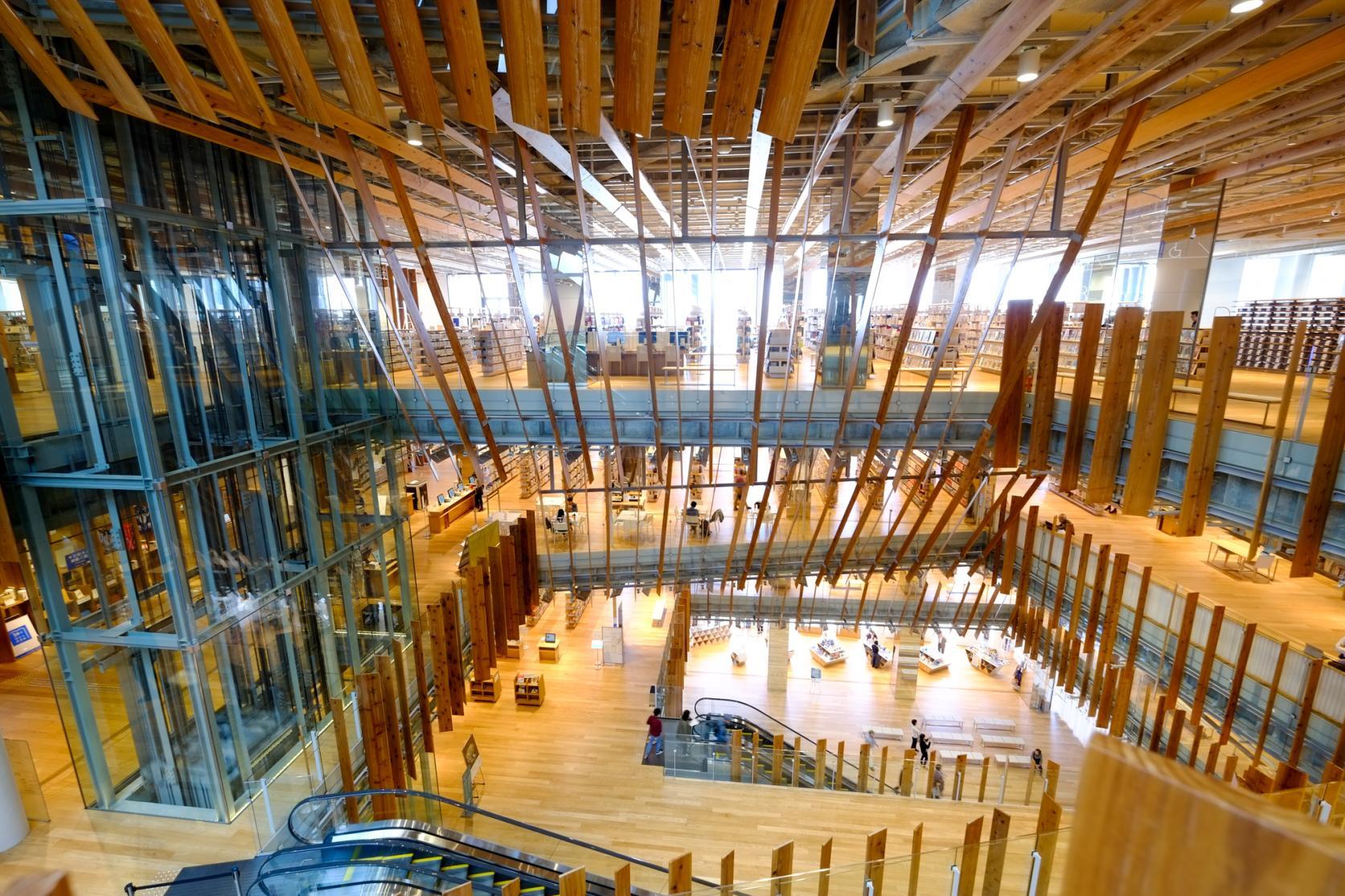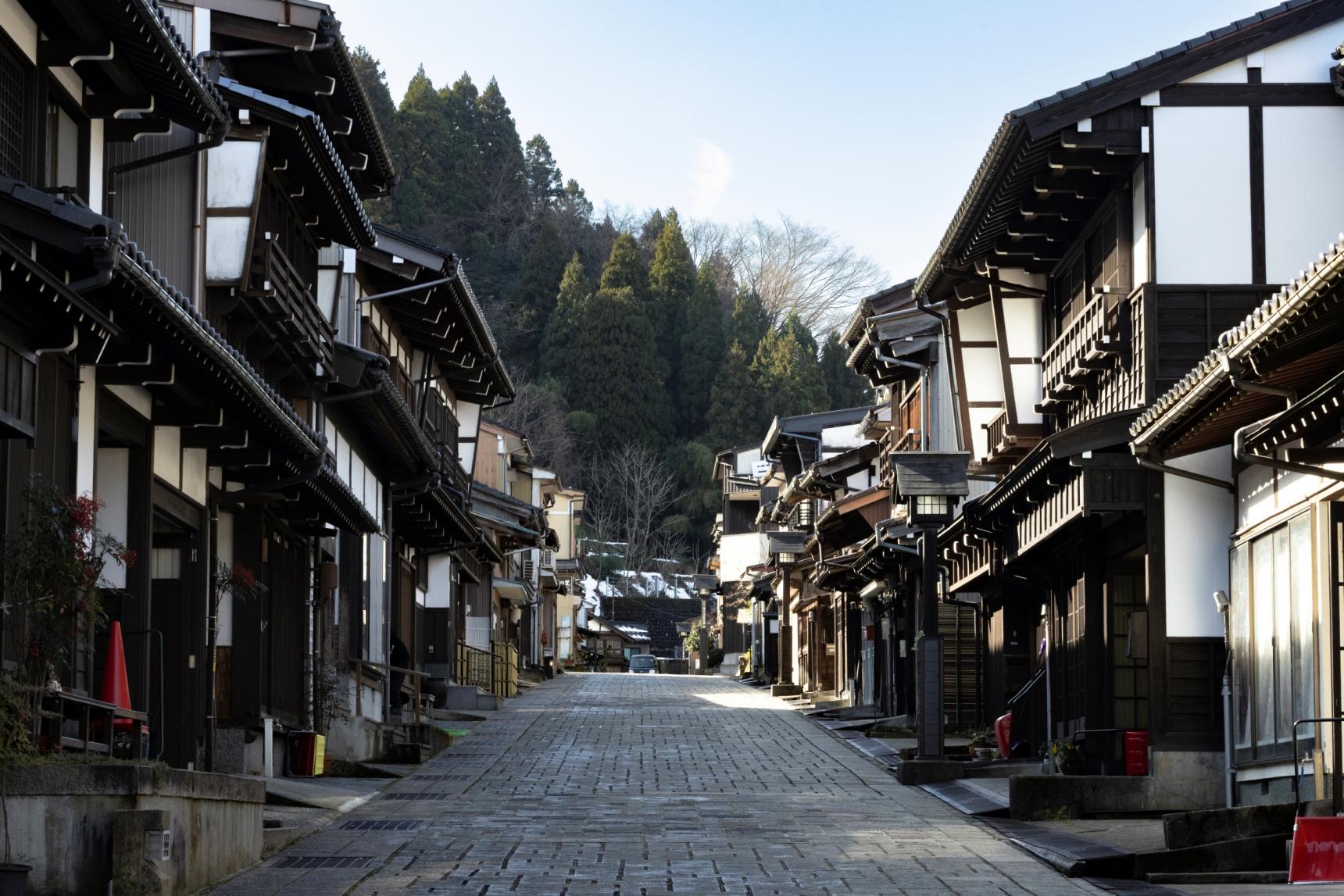Experience Toyama’s rich cultural heritage and traditions on a multi-faceted journey through the region
Toyama Culture and Heritage: 3 days, 2 nights

Toyama draws visitors for its blend of natural beauty and vibrant culture which can be experienced in everything it has to offer, from historic streetscapes and World Heritage festivals to traditional crafts, poetry-inspiring views, and numerous art galleries and museums. Spend three days exploring Toyama to experience this culture in its myriad forms. Accommodation is available throughout the prefecture, including at stylish venues such as reformed ateliers.







- Suggested Length3 days, 2 nights
- Main TransportationBus, Train, Walking
START
Day 1: Morning
Shin-Takaoka Station
Takaoka: Where artisan craft thrives

Takaoka City is central to Toyama’s history as the birthplace of the area’s emblematic metalworking industry. Ateliers and factories dotted around Takaoka—particularly in the history-steeped Kanayamachi neighborhood—maintain the metalworking traditions of the Edo period (1603–1867) while innovating their craft to ensure it remains relevant in the twenty-first century.
Kanaya is a brand, with a showroom-shop in Kanayamachi, that uses the area’s time-honored metalworking techniques to produce highly contemporary interior goods. Nousaku, with its roots in the making of Buddhist ritual objects, is a storied Takaoka metal casting factory where you can experience making a small metal accessory.
Takaoka is also the location of one of Toyama Prefecture’s most vibrant annual events, the Takaoka Mikurumayama Festival. This festival is held each May 1 and is designated UNESCO Intangible Cultural Heritage. Several ornate, giant wheeled floats, said to be based on an imperial carriage from the sixteenth century, are paraded through the streets. Two of these floats can be seen year-round at the Takaoka Mikurumayama Museum.
| Address | 933-0841 富山県高岡市金屋町 | |
|---|---|---|
| Telephone Number | 0766-20-1301 |
Day 1: Afternoon
Takaoka Station
Train: 28 min
Himi: Culture on the coast

From Takaoka Station, take a 20-minute train ride—or perhaps a bike ride—to Himi, a laidback fishing town on Toyama Bay. This stretch of waterfront includes the rugged Amaharashi Coast, famed for the view it offers of Toyama Bay against the dramatic backdrop of the Tateyama mountains. This iconic view has long been celebrated by poets and is even mentioned in the Manyoshu, Japan’s oldest extant poetry collection.
The Himi Seaside Botanical Garden is around 17 minutes on foot from Shimao Station on the Himi Line or 5 minutes by taxi from Himi Station. A wide variety of seaside plants, including tropical and subtropical species are housed in and around the Botanical Garden’s distinctive glass and steel structure that curves like a shell. Further along the coast, you can shop for souvenirs and sample seafood at Himi Banya-gai or soak in a hot spring at Himi Onsenkyo Soyu.
| Address | 935-0004 富山県氷見市北大町25-5 | |
|---|---|---|
| Telephone Number | 0766-72-3400 | |
| Opening Times | Fresh fish/merchandise facilities: 8:30-18:00, Food and beverage facilities: 11:00-18:00, Rotating sushi bar: 10:00-20:00 Eat-in corner: 8:30-18:00 |
|
| Closed | January 1st |
Day 2: Morning
Toyama: Past and Present

The city of Toyama has a wealth of historical sites and examples of contemporary art and design. A 15-minute walk from Toyama Station takes you to Toyama Castle Park, which contains a reconstruction of the original castle keep from 1543. The keep also houses the Toyama City Local History Museum. The park is especially popular for cherry blossom viewing in spring.
Art lovers are spoiled for choice, with several world-class museums near the city center. Toyama Prefectural Museum of Art and Design is located across the street from Fugan Canal Kansui Park, within walking distance from Toyama Station. Local and international artists and designers are well represented, and the rooftop offers sweeping views of the Tateyama mountains. The Toyama Glass Art Museum focuses on contemporary artworks rendered in glass. Don’t miss the vivid, organic forms created by glass master Dale Chihuly in the Glass Art Garden. The museum is around 11 minutes by tram from Toyama Station or a ten-minute walk from Toyama Castle Park.
| Address | 930-0062 富山県富山市西町5-1 | |
|---|---|---|
| Telephone Number | 076-461-3100 | |
| Opening Times | From 9:30 to 18:00 (Until 20:00 on Fridays and Saturdays) |
|
| Closed | 1st and 3rd Wednesdays of the month, New Year's Holidays *Special exhibitions may be closed on different days. |
Day 2: Afternoon
Toyama Station
Bus: 1 hr 1 min
Yatsuo: Historical streets rich in culture

The townscape of Yatsuo has changed little since the Edo period (1603–1867) when it was a wealthy center of trade for silk and paper merchants. Start your exploration at the Yatsuo Owara Museum, to learn about the famous Owara Kaze-no-Bon Festival that fills the streets with music and dancing each September. At the Yatsuo Hikiyama Exhibition, you can see ornately carved floats that feature in the Yatsuo Hikiyama Festival each May. Suwamachi Street, lined with traditional wooden houses and shops, runs through the center of town and adds to the townscape’s nostalgic charm.
Keijusha Washi Bunko is a washi paper atelier and museum featuring Yatsuo’s distinct stencil dyeing. Colorful designs are available for sale, and you can try making your own paper decorated with motifs of Yatsuo, such as festival dancers.
Etchu-Yatsuo Base OYATSU is an ideal stop for a break as you explore the town. The former silk and paper merchant’s house was built in the nineteenth century and has been carefully renovated to encompass a cafe and lodgings. Stays are limited to just one group per night, so you can enjoy a private experience. Yatsuo is accessible from Toyama Station by train and bus in around 45 minutes.
| Address | 939-2354 富山県富山市八尾町東町2105-1 | |
|---|---|---|
| Telephone Number | 076-455-1780 | |
| Opening Times | 9:00-17:00 (no entry after 16:30) | |
| Closed | New Year period and when maintenance is required |
Day 3: Morning
Toyama: Local flavors

Leave some time to explore the area around Toyama Station, and pick up some local specialties. With its rich fishing heritage, Toyama’s seafood is famous and well-loved. Try masu-no-sushi, an arrangement of thinly sliced trout pressed over sushi rice and wrapped in bamboo leaves, which has been sold as a boxed lunch for over a hundred years. Shiroebi, or Japanese glass shrimp, is a popular winter delicacy that you can try at sushi restaurants around the station. You can also find a variety of shiroebi-flavored snacks that are an ideal accompaniment to Toyama-brewed sake. Toyama Black Ramen is a popular and portable souvenir. The rich, salty soy sauce-based soup is said to have developed in the 1950s.
Link to the’Toyama Gift Guide: Snacks and Souvenirs at Toyama Train Station’
FINISH
The mapping service on this website is based on the free usage limits provided by Google Maps and the Google Maps privacy policy applies.
Note that Google Maps may occasionally not display correctly due to usage limits.
| Onward Journeys: Nagano Nagano Prefecture is just an hour from Toyama via the Hokuriku Shinkansen. The mountainous prefecture is popular with skiers and snowboarders in winter. Ski resorts like Nozawa Onsen draw visitors from around the country with their powder snow and convenient facilities. Head to Jigokudani Yaen-Koen monkey park to see the famous red-faced macaques bathing in natural hot springs. Alternatively, stop at Zenkoji Temple in Nagano City, an impressive temple founded in the seventh century. |






